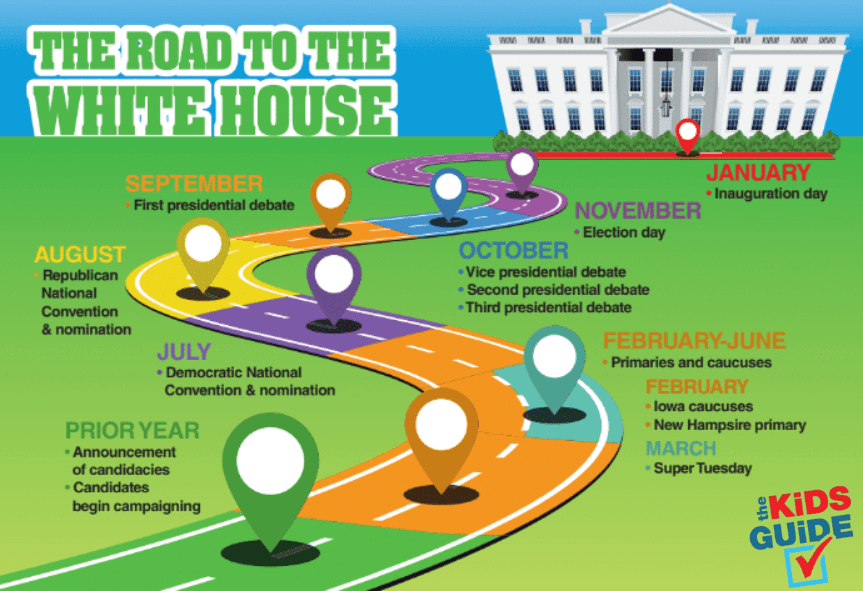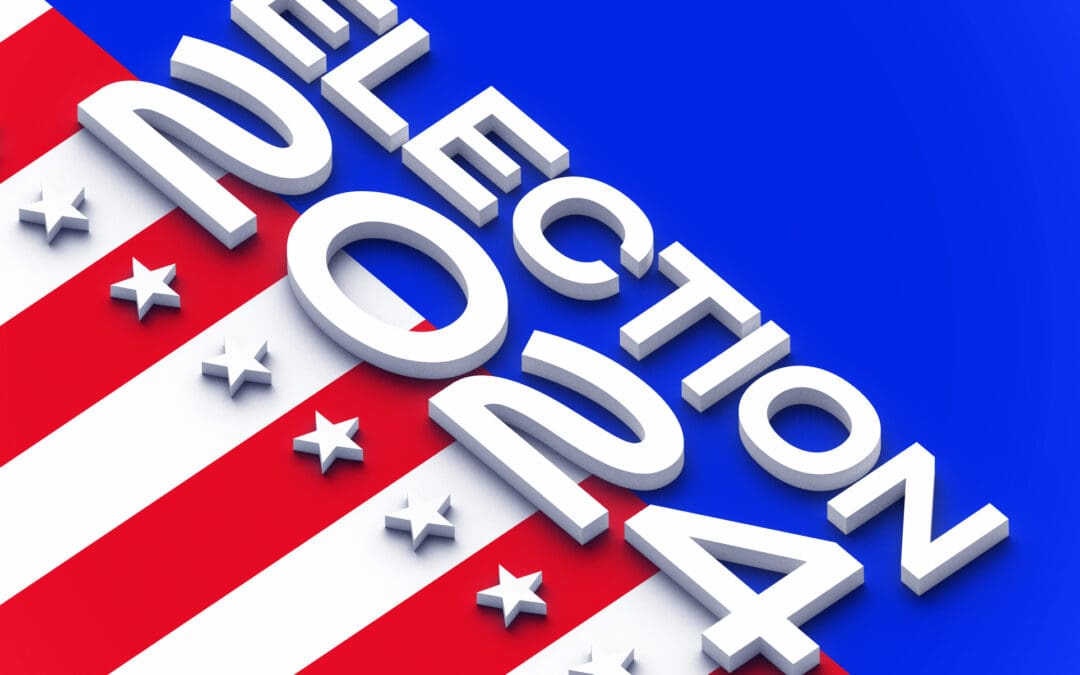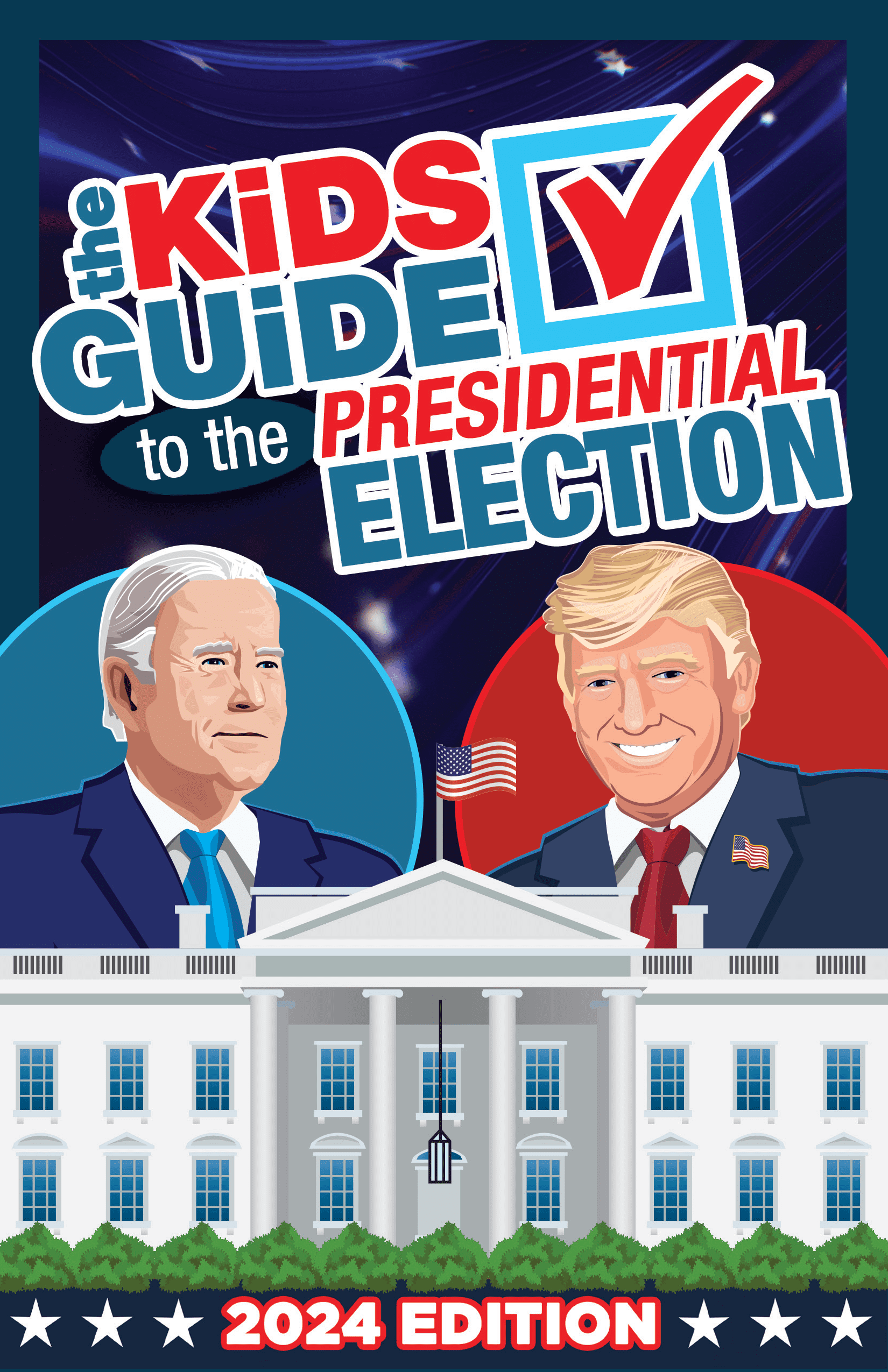As parents, one of our paramount responsibilities is to prepare our children for the future, helping nurture their understanding of the world and their place in it. Central to that understanding is the concept of civic engagement, beginning with the cornerstone of democracy—the election process. It’s easy to underestimate the impact a parent’s approach to the election cycle can have on their children’s attitudes toward the political process, yet it greatly shapes their future as informed and engaged citizens. Elections are a crucial part of any democratic society, as they provide citizens with the opportunity to have a say in how their country is governed. As adults, we understand the significance of participating in elections, but it is equally important for children to learn about the election process and develop an understanding of its importance. By doing so, we’re not only preparing them for the future but also harnessing their untapped potential to shape and influence the political landscape.
Harnessing a Unique Learning Opportunity
Real-world experiences are the best teachers for our children. And, when it comes to the Presidential Election, which only happens every four years, it’s more than a pivotal moment in our nation’s history—it’s a unique learning opportunity for our children! Kids learn best about events as they unfold in real time because they transform abstract concepts into tangible, observable phenomena. This immediacy helps anchor learning in a concrete context, making it easier for kids to grasp complex ideas, such as the election process. Additionally, real-time events spark curiosity and engage children’s natural inclination to ask questions and seek answers, thereby deepening their understanding and retention. The upcoming 2024 election provides a perfect opportunity to spark a deep-seated interest in civic responsibility and leadership among our children. After all, they’re not just kids; they’re future voters, future decision-makers, and future leaders. And it all starts with understanding and active participation.
In this blog, we’ll delve into the reasons why teaching kids about the election process is essential and the basics to start teaching them now!
A Lesson in Civic Engagement
The bedrock of any thriving democracy is well-informed and actively engaged citizens. By introducing children to the election process, we can cultivate a sense of responsibility and involvement in our civic duties. It is through this that we articulate our nation’s needs, share our goals, and endorse the leaders who will represent and serve us. Elections provide a practical, hands-on way to teach children about the importance of voting, the roles of elected officials, and how government decisions impact our daily lives. This education fosters a generation that understands the value of their vote and the power of their voice in shaping society.
The Beginning of a Remarkable Journey…
Start by explaining the basics of the election process:
- What is a presidential election?
A presidential election is a process by which the citizens of the United States choose their next leader, known as the president. The president is responsible for making important decisions that affect our country and its citizens. It is important for kids to understand that we are very fortunate to have the opportunity to participate in elections, a privilege not available in all countries around the world. This democratic process allows every eligible citizen to have a say in who leads our nation, contributing to the shaping of our future through civic engagement. Being a part of this democratic process not only reinforces the importance of individual voices but also fosters an appreciation for the freedoms and rights that form the foundation of our great nation.
Ask your child: What are some rights and freedoms you are most thankful for as an American?
- When does the presidential election take place?
The presidential election is on the first Tuesday after the first Monday in November. The 2024 presidential election will take place on November 5th, 2024. However, the process of electing the president begins much earlier in the year with a series of events and debates leading up to Election Day. This gives candidates a chance to introduce themselves, share their plans and ideas for the country, and receive feedback from voters before making their final decision on who to vote for. George Washington was the first president of the United States. He was sworn into office on a balcony overlooking Wall Street in New York City in 1789.
Ask your child: How do you think being the first president might have been challenging?
- Who can participate in an election?
To be eligible to vote in a presidential election, you must meet specific requirements. You must be at least 18 years old, a United States citizen, and registered to vote. Any person can make a difference, which is why every vote counts! It is important to note that not all citizens have the right to vote. Some individuals, such as non-citizens or those convicted of a felony, may be excluded from participating in the election process. Voting rights for individuals with felony convictions vary by state, with some states allowing individuals to vote after completing their sentence, and others permanently depriving them. However, it is still important for these individuals to stay informed about the candidates and issues being discussed during the election season.
Ask your child: Why do you think there are specific requirements, like being 18 years old, to vote in a presidential election?
- How long is a presidential term?
A presidential term in the United States lasts for four years. This is outlined in the 22nd Amendment to the Constitution, which states that no person can be elected to the office of the president more than twice, and no one who has served more than two years of a term to which someone else was elected can be elected more than once. This means that a president can potentially serve up to two terms, for a maximum total of eight years in office. However, if a vice president assumes the role of president due to the death, resignation, or impeachment of the current president and serves less than two years of that term, they are still eligible to be elected twice for a maximum total of ten years in office.
Ask your child: Why do you think the United States limits a president to serving only two terms?
- What are political parties?
Political parties are not like birthday parties or other celebrations! Explain that they are groups of people who share similar ideas about how the government should work. Because people don’t always believe the same things about the country should be run, different parties started. There have been several different parties since the beginning of the nation, but today, we have two main parties—the Republicans and the Democrats. A large percentage of Americans are “Independent”. That means they aren’t members of any party. Some people always support one party or the other. And some decide based on each candidate, so their party may change over the years. It is important to stress the value of respectful dialogue and understanding, even when people disagree politically. Encourage kids to have open-minded discussions and listen to different perspectives.
Ask your child: How will you decide which party to join?
- How are candidates chosen?
Candidates from different political parties first go through a series of primary elections, where citizens vote to determine their party’s nominee. These nominees then face off against each other in the general election. However, the process of selecting a presidential candidate can vary between parties. For example, in the Democratic Party, delegates are allocated based on the results of primary elections and caucuses, while in the Republican Party, some states hold closed primaries where only registered party members can vote for their nominee. Overall, candidates must also meet specific requirements as outlined in the Constitution, such as being a natural-born citizen of the United States, at least 35 years old, and a resident of the country for at least 14 years.
Ask your child: What do you think would be the best qualifications to be president?
- What are primaries and caucuses?
Primaries and caucuses are like the first round in a big competition to decide who will be the final players in an important election, such as choosing the president of the United States. Imagine you and your friends are picking teams for a soccer game. Before the big match, you might have smaller games or votes to decide who the team captains will be. In a primary, people go to a specific place to vote, sort of like dropping a note in a box to say who they think the best team captain would be. A caucus is a bit different; it’s more like a meeting where friends get together, talk about who they think would make the best captain, and then make their choice. Both primaries and caucuses help a political party decide which candidate they want to represent them in the big game, or in this case, the final election!
Ask your child: Why do you think it’s important for people to vote in primaries and caucuses? (Encourages kids to understand the significance of participating in these early stages of the electoral process and how it contributes to democratic decision-making.)
- What are party conventions?
Party conventions are national meetings each political party holds to formally select the two main candidates who will run for president and vice president. Conventions are made up of delegates chosen by each state’s primaries or caucuses who are sent to officially nominate their party’s presidential and vice-presidential candidates. During the conventions, there are many meetings and speeches that lead up to the formal nomination of the party’s candidate for President, which is based on how many delegates they won during the primaries and caucuses. Each state is called on and announces the name of the person who won that state’s selection. The candidate who gets the most votes wins the nomination and announces their vice presidential running mate.
Ask your child: How do you think a state feels when it gets to announce the name of the candidate who won their selection during the convention? (Encourages kids to consider the pride and significance of participating in the democratic process at a state level and contributing to the national outcome.)

Photo: Excerpt from The Kids Guide to the Presidential Election
- What happens during the campaign?
For more than a year, candidates try to earn the vote of every American. They travel around the country making speeches and answering questions from voters. They make advertisements that go on TV, radio, in the newspapers, and on the Internet. And they also engage in televised debates with other candidates. At these debates, professional moderators ask questions to the candidates. The goal is for the country to learn more about each candidate and their positions on the issues. Presidential debates are a great opportunity for kids to see candidates discuss important issues. These events showcase their abilities to think on their feet and answer challenging questions. Before watching a debate, explain to kids the format and purpose of the event. Encourage them to listen carefully to the answers and consider which candidate’s ideas align with their values. Here are some of the popular topics presidential candidates get asked about during debates…
-Healthcare, the economy, the environment, taxes & the Budget, immigration, religion, civil rights, education, firearms, free trade, national defense
Ask your child: What topics are important to you? What questions would you ask a presidential candidate during a debate?
Don’t forget to discuss with kids:
- Explain how candidates try to persuade people to vote for them and the different techniques they use. For example, they may use slogans or catchy phrases, share personal stories, or attack their opponent’s ideas.
- The importance of doing research and fact-checking before forming an opinion. Encourage kids to look beyond the flashy ads and speeches and dig deeper into each candidate’s policies and track record. Encourage kids to think critically about what they see and hear during campaigns, and not just believe everything they see or hear.
- The impact of social media on modern-day campaigns. Discuss how social media and other forms of media have changed the way politicians reach out to voters. This direct line of communication can make engagement more personal and interactive, allowing candidates to share their messages and sometimes even respond to questions directly. Information can spread VERY quickly through social media; However, this also applies to misinformation and false rumors. So don’t simply pick a candidate because of how they are portrayed on social media or by what is said in so-called “attack ads” you see circulating the Internet.
- The responsibility of journalists is to report the news accurately and without bias (But they don’t always do this). Encourage kids to be critical of the information they consume and help them fact-check stories before accepting them as facts.
- It is crucial to consume news from a variety of sources. Discuss how each media outlet may have its own biases, and it’s important to get different perspectives on an issue or candidate.
Exploring the Candidate Landscape
Introduce kids to the key players in the 2024 election—potential candidates who will campaign to become the next President. Share their stories, backgrounds, and any unique characteristics that make each candidate distinct. Here is a great resource to do so! Help kids understand that while politicians can have different ideas and beliefs, the election process allows citizens to voice their opinions and choose the best candidate to lead the country. Leadership is a core theme of any election. Discuss what it means to be a leader and how leadership styles can differ. This is an excellent opportunity to talk about qualities like honesty, empathy, and the ability to make tough decisions. Encourage kids to think about the type of leader they would like to see in the White House and why those qualities are important to them.
Ask your child: What do you think makes a strong leader?
The Significance of the Electoral College
The concept of the Electoral College can be difficult to grasp, even for adults. Simplify the explanation by discussing how each state has a certain number of electoral votes, and the candidate who receives a majority of these votes wins the election. This system was put in place by the Founding Fathers to ensure that smaller states still have a say in the election, rather than just relying on heavily populated areas. While there has been some controversy surrounding the Electoral College, it remains an important aspect of our democratic process and helps to balance power between different regions of the country.
It’s crucial for children to understand how their future votes as adults will contribute to the overall outcome of the presidential election. Use graphics and visuals to demonstrate how each state’s electoral votes are distributed and how it affects the final result. This can help children develop a deeper understanding of the importance of voting and participating in our democratic system.
Ask your child: Why does the Electoral College make sense?
Reflecting on the Current President’s Term
It’s crucial to reflect on the current president’s term and discuss what they have accomplished or struggled with. This historical perspective helps children understand the long-term impacts of elections and policies. Encourage kids to think about how their own lives have been influenced over the past four years and what they might want to see changed or continued in the future.
The Time Is Now
The Presidential Election is not an event lost on the young; it is a tutorial in real-time democracy and a living classroom for our youngest learners. By leading this exploration, we are forging a generation of informed citizens—the true hope of our democratic legacy. Now, more than ever, our children need to understand the power and privilege that come with their future ballots!
By engaging children in the election process, we’re not just teaching them about the mechanics of voting. We’re instilling a sense of civic duty, nurturing critical thinking skills, and inspiring a new generation to take an active role in their democracy. Let’s seize this opportunity to educate and empower our children, ensuring they grow up to be informed, engaged, and responsible citizens.
Together, we can prepare our nation’s future voters to take on the torch with wisdom, responsibility, and power.
This post is sponsored by the Kids Guide to The Presidential Election. For information about this product, visit https://thekidsguide.com/presidentialelection/.



Recent Comments